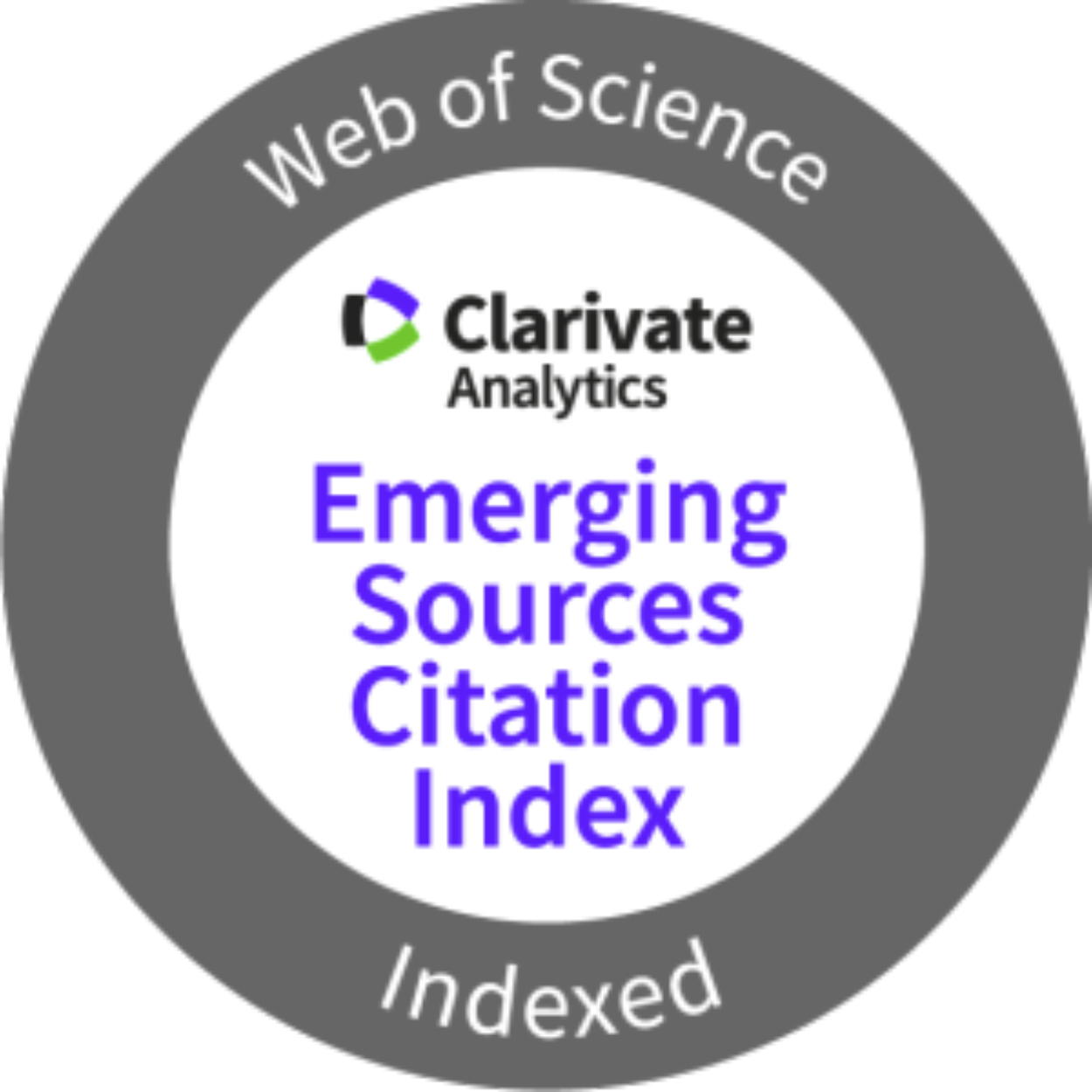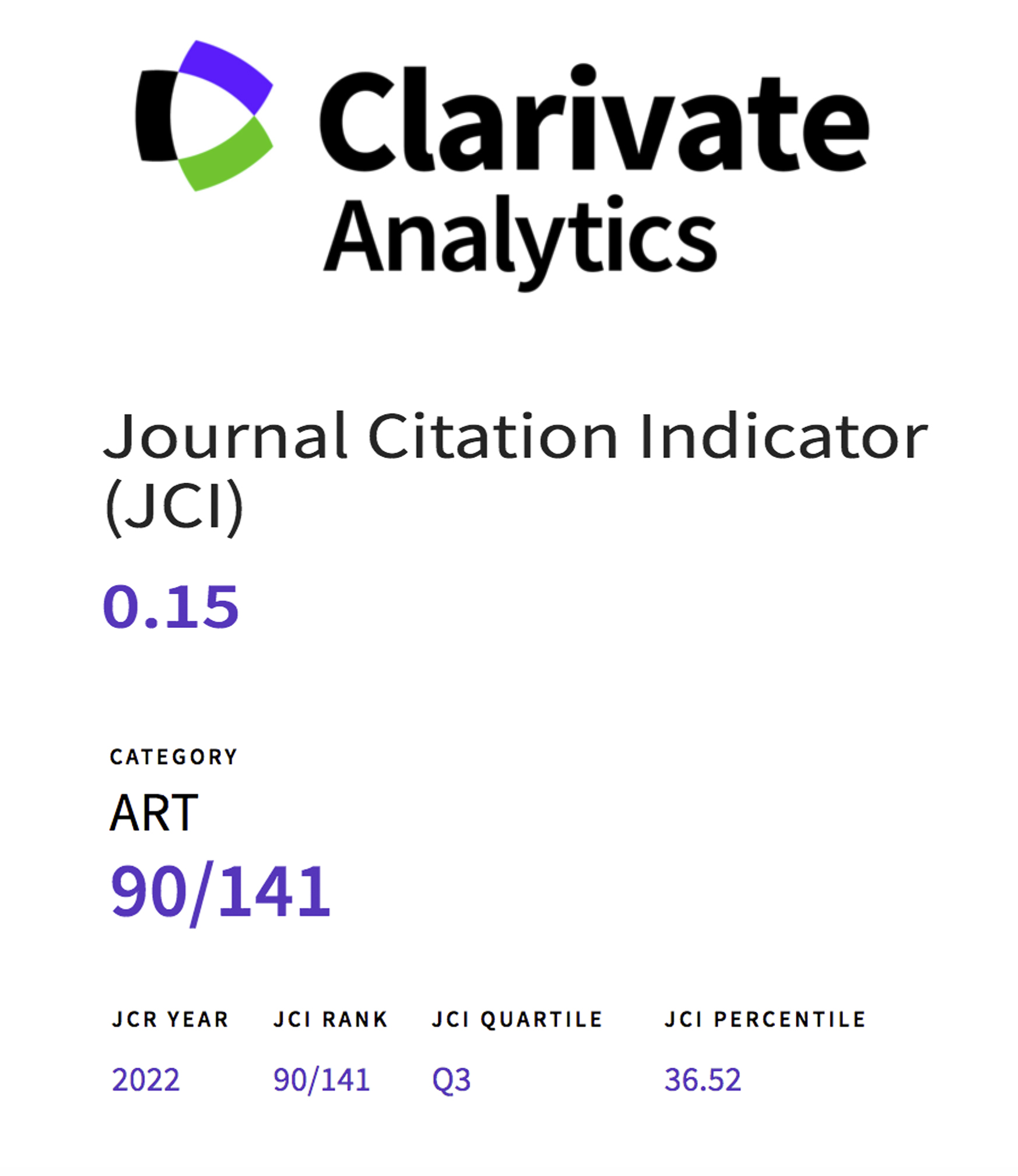Arte digital y temporalidades queer
Análisis de la obra de Danielle Brathwaite-Shirley, Morehshin Allahyari y Heesoo Kwon
Resumen
Las obras de arte digital nos permiten visualizar ideas complejas y abstractas. Este artículo pone el foco en epistemologías alternativas sobre el tiempo expresadas a través del arte digital contemporáneo. Su objetivo es analizar cómo la obra de Danielle Brathwaite-Shirley, Morehshin Allahyari y Heesoo Kwon muestra temporalidades queer contrarias a la crono-normatividad cis-heterosexual y colonial. Para ello, comienza por describir teóricamente las cosmovisiones temporales occidentales. A continuación, recoge aproximaciones críticas a las mismas, desde las teorías queer y alrededor de los conceptos de “archivo” y “utopía.” La revisión teórica sirve de base para el análisis de las piezas de la muestra, formada por siete obras de las artistas mencionadas. Los análisis de cada una de las piezas se presentan primero de forma individual, ordenados por cada una de las artistas. En las conclusiones se discuten las piezas conjuntamente. Los resultados muestran una tensión entre los conceptos de “archivo” y “utopía,” presente simultáneamente en las piezas analizadas. Consecuentemente, el artículo propone nuevos marcos conceptuales que permitan entenderlas lejos de la división dicotómica de estos términos: las “blutopías” (siguiendo a Keeling) y las “hauntologías” intervencionistas (siguiendo a Fisher).
Descargas
Citas
Bernini, L. (2015). Apocalipsis queer: Elementos de teoria antisocial (Albert Tola, Trad.). Editorial Egales.
Bersani, L. (1987). Is the Rectum a Grave? October, 43, 197. https://doi.org/10.2307/3397574
Bersani, L. (1995). Homos. Harvard University Press.
Boellstorff, T. (2010). Queer techne: Two theses on methodology and queer studies. En C. J. Nash & K. Browne (Eds.), Queer methods and methodologies: Intersecting queer theories and social science research (pp. 215-230). Routledge.
Brummett, B. (2019). Techniques of close reading (2.a ed.). SAGE.
Butler, J. (1993). Critically queer. GLQ: A Journal of Lesbian and Gay Studies, 1(1), 17-32. https://doi.org/10.1215/10642684-1-1-17
Carrascosa, S., Platero, L., Senra, A., & Vila Núñez, F. (2015). ¿Archivo Queer? Museo Nacional Centro de Arte Reina Sofía.
Chen, J. N., & cárdenas, micha. (2019). Times to Come. TSQ: Transgender Studies Quarterly, 6(4), 472-480. https://doi.org/10.1215/23289252-7771639
Cvetkovich, A. (2018). Un archivo de sentimientos: Trauma, sexualidad y culturas públicas lesbianas (J. Sáez, Trad.). Bellaterra.
Cvetkovich, A., Frantz, D. E., & Locks, M. (Eds.). (2011). Cruising the archive: Queer art and culture in Los Angeles, 1945-1980. ONE National Gay & Lesbian Archives.
Dean, T. (2011). Bareback time. En E. L. McCallum & M. Tuhkanen (Eds.), Queer Times, Queer Becomings (pp. 75-100). State University of New York Press.
Derrida, J. (1997). Mal de archivo: Una impresión freudiana. Trotta.
Dinshaw, C. (2007). Temporalities. En P. Strohm (Ed.), Middle English (pp. 197-223). Oxford University Press.
Dinshaw, C., Edelman, L., Ferguson, R. A., Freccero, C., Freeman, E., Halberstam, J., Jagose, A., Nealon, C., & Hoang, N. T. (2007). Theorizing Queer Temporalities. GLQ: A Journal of Lesbian and Gay Studies, 13(2-3), 177-195. https://doi.org/10.1215/10642684-2006-030
Edelman, L. (2014). No al futuro: La teoría queer y la pulsión de muerte (J. Sáez & A. Baschuk, Trads.). Editorial Egales.
Farrier, S. (2013). It’s about Time: Queer Utopias and Theater Performance. En A. Jones (Ed.), A Critical Inquiry into Queer Utopias (pp. 47-68). Palgrave Macmillan US. https://doi.org/10.1057/9781137311979_3
Fernandez, M., Wilding, F., & Wright, M. M. (Eds.). (2002). Domain errors! Cyberfeminist practices. Autonomedia.
Fisher, M. (2018). Realismo capitalista. ¿No hay alternativa? (C. Iglesias, Trad.). Caja Negra.
Freeman, E. (2010). Time binds: Queer temporalities, queer histories. Duke University Press.
Halberstam, J. (2005). In a queer time and place: Transgender bodies, subcultural lives. New York University Press.
Haraway, D. J. (2019). Las promesas de los monstruos: Ensayos sobre ciencia, naturaleza y otros inadaptables (J. Fernández Gonzalo, Trad.; Primera edición). Holobionte Ediciones.
Hart, T. (2020). Dining on trauma: Danielle Brathwaite-Shirley talks trans-tourism, motherhood, & being a ‘Freaky Friday everyday’. AQNB. https://www.aqnb.com/2020/08/10/dining-on-trauma-danielle-brathwaite-shirley-on-trans-tourism-motherhood-and-being-a-freaky-friday-everyday/
Hartman, S. (2008). Venus in Two Acts. Small Axe: A Caribbean Journal of Criticism, 12(2), 1-14. https://doi.org/10.1215/-12-2-1
Haschemi Yekani, E., Kilian, E., & Michaelis, B. (Eds.). (2016). Queer Futures: Reconsidering Ethics, Activism, and the Political (0 ed.). Routledge. https://doi.org/10.4324/9781315603193
Honig, B. (2021). A feminist theory of refusal. Harvard University Press.
Hui, Y. (2020). Fragmentar el futuro: Ensayos sobre tecnodiversidad (T. Lima, Trad.). Caja Negra.
Kaplinsky, H. (2023). Caring for ‘Range-ful’ Identities in the Work of Danielle Brathwaite-Shirley. En E. Krasny & L. Perry (Eds.), Curating with Care. Routledge.
Keeling, K. (2019). Queer times, black futures. New York University Press.
Khanna, S., & Brathwaite-Shirley, D. (2021). Interview with Danielle Brathwaite-Shirley by Flatness for Feminist Review and Women’s Art Library, April 2021. Feminist Review, 129(1), 109-122. https://doi.org/10.1177/01417789211037031
Kwet, M. (2019). Digital colonialism: US empire and the new imperialism in the Global South. Race & Class, 60(4), 3-26. https://doi.org/10.1177/0306396818823172
Lefanu, S. (1989). Feminism and science fiction. Indiana University Press.
Luciano, D. (2007). Arranging grief: Sacred time and the body in nineteenth-century America. New York University Press.
Martínez-Carrasco, R., & Báez-Humanes, R. (2023). Localizar lo queer: Una lectura demasiado atenta de Undertale. Mutatis Mutandis. Revista Latinoamericana de Traducción, 16(1), 204-228. https://doi.org/10.17533/udea.mut/v16n1a12
Munster, A. (2006). Materializing new media: Embodiment in information aesthetics. Dartmouth College Press.
Muñoz, J. E. (2020). Utopía queer: El entonces y allí de la futuridad antinormativa (P. Orellana & M. López Seoane, Trads.). Caja Negra.
Nothias, T. (2022). How to Fight Digital Colonialism. Boston Review. https://www.bostonreview.net/articles/how-to-fight-digital-colonialism/
Phillips, R. (2015). Black Quantum Futurism: Theory & practice. AfroFuturist Affair, House of Future Science Books.
Pinto, R. Á. (2018). ¿Soberanía digital o colonialismo digital? Nuevas tendencias alrededor de la privacidad, la seguridad y las políticas nacionales. Sur. Revista Internacional de Derechos Humanos, 15(27), 15-28.
Plant, S. (1997). Zeroes + ones: Digital women + the new technoculture (1.a ed.). Doubleday.
Pratt, L. (2011). Close Reading the Present: Eudora Welty’s Queer Politics. En E. L. McCallum & M. Tuhkanen (Eds.), Queer Times, Queer Becomings (pp. 183-204). State University of New York Press.
Quiroga, J. (2003). From Republic to Empire: The Loss of Gay Studies. GLQ: A Journal of Lesbian and Gay Studies, 10(1), 133-137. https://doi.org/10.1215/10642684-10-1-133
Rawson, K. J. (2022). The trans rhetorical practice of archive building. En J. Rhodes & J. Alexander (Eds.), The Routledge Handbook of Queer Rhetoric (1.a ed., pp. 77-84). Routledge.
Russell, L. (2022). Feminismo Glitch: Un manifiesto (F. Fernández Gordiano, Trad.; 1.a ed.). Holobionte Ediciones.
Sedgwick, E. K. (1993). Tendencies. Duke University Press.
Smurthwaite, J. (2022). Danielle Brathwaite-Shirley: She Keeps Me Damn Alive. Art Monthly, 453, 30-31.
Thomas, S. A. (2022). Danielle Brathwaite-Shirley. Frieze 231, 68-77.
Vallette, J. (2020). Gaming, Visibility and Black Trans Experience: An Interview with Danielle Brathwaite-Shirley. Berlin Art Link. https://www.berlinartlink.com/2020/08/14/gaming-visibility-and-black-trans-experience-an-interview-with-danielle-brathwaite-shirley/
Derechos de autor 2024 Servicio de Publicaciones de la Universidad de Murcia

Esta obra está bajo una licencia internacional Creative Commons Atribución-NoComercial-SinDerivadas 4.0.
Works published in this journal are subject to the following terms:
- The Service of Publications from the University of Murcia (publishing house) keeps the published works’ copyrights, and favors and allows the reuse of these works under the license indicated in point 2.
- Works are published in the journal’s online edition under the license Creative Commons Reconocimiento-NoComercial-SinObraDerivada 3.0 España(texto legal). They can be copied, used, disseminated, transmitted and publicly exhibited, as long as: i) the author and original source of publication are cited (journal, publishing house and work’s URL); ii) they are not used for commercial purposes; iii) the existence and specifications of this license are mentioned.
3. Conditions for auto-file. It is allowed and encouraged that authors share electronically their pre-print version (the pre-reviewed version) and /or post-print version (the reviewed and accepted version) of their Works before the publication, since it promotes its circulation and dissemination. RoMEO color: green.










